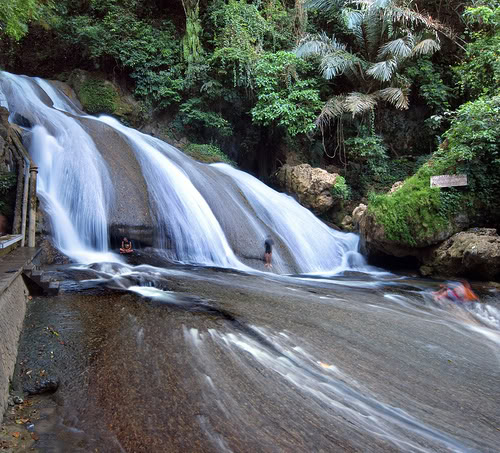The History Background
The owners of the culture art of South Kalimantan are the Banjar tribes who give dominant styles to the culture and art of that area. The Dayaks, Malays, Javanese, Buginese and some others have also cor/>ntribution in the forming of South Kalimantan art and culture. The Banjars are actually the mixture of the Maayan, Lawangan, Bukit and Ngaju tribes who are influenced by the Malayan and Javanese culture. It is said that the Malays had migrated to this area before the 6th century. Later, together with the Dayak, they formed a new tribe which was first known as the Banjar tribe.
The migration of the Javanese happened in the 13th century. They were mostly from East Java. The migration was probably caused by the political chaos in Java.
The settlers, who were the Malays or the Javanese, had to use rivers like the Barito, the Negara, the Martapura, the Tabalong, etc., for the means of transportation.
The Dayak had settled there along the rivers for long time. And so the mixture of these groups of people were inevitable. In forming the new groups, the Banjars were dominant.
The migration had continued. During the Sriwijaya era, the Malays came and during the Majapahit era, the Javanese did. And then came the Islamic culture which was brought by the Malays, the Banjars and the Javanese. The Islamic influences entered through the rivers of Barito, the Martapura, the Negara up to the smaller ones like the Tapin, the Amandit, the Tabalong, the Balangan, etc.
In the 16th century, the Buginese and the Mandars arrived at south east Kalimantan. The mixture (mingle) of the Dayak, the Malays and the Javanese formed a new language that is known as the Banjar language. In this language, the Malay structure and vocabulary are more dominant than the Javanese or other languages. When Islam was adopted by the Banjars, as a mixture of tribes, could easily adopt foreign influences, including the Islamic religion. And later, their descendants and Islam had great contributions to strengthen this tribe. The native or the Dayak who believe in Islam, call themselves “the Banjar”, but those who believe in the “Kaharingan” and those who are Christian call themselves the Dayak.
Since the Banjars are a mixture of tribes, their cultural and art is also a kind of synthesis. But later, their culture and art had become characteristically “Banjar”, which constitute one form of culture and art among the so many forms in Indonesia.
The Malay influences are not only on the language, but also on the culture and art. The Banjar headdresses are also similar to those of the Malayan ones. The formal dresses (clothes) for men (the “baju palimbangan”) are also similar to those worm by the Malayan (the “baju Teluk Belanga”).
Their dances are also influenced by the Malays. The “Japen” dance or the “Japin” is one of the dances that still exists in South Kalimantan in the settlements of the Banjars as well as the Malays ones. The theatrical art also gets some influences from the Malays society. Many years ago, Royal theatre was also found in the Malays settlements. The influences can still be found in the “Mamanda” theatre which is still popular up to now.
There are also Javanese influences in their language as well as their culture; mainly in the theatre and visual art (fine art).
At the theatrical art, such as the leather puppets (wayang kulit) there are two kinds of art, the theatrical and the fine art. The language they use is the mixture of Javanese and Banjar languages. The conditions in the “Wayang Orang” and “Damarulan” are the same. In Java, they are known as “Wayang Wong” and “Damarwulan”. Beside Wayang Orang, there is also “Wayang Gung” there. It is like wayang orang but there are some differences in the headdresses and the stories they perform.
The Javanese influences in the fine art also very cleat; especially in the making of leather puppets that have Hindu or Buddhist ornaments. The gamelan instruments they use are also similar to those of Java; they have the same name and forms.
If we study the whole culture of South Kalimantan, we’ll find that the local culture is influenced by other culture. They are as follows:
1. The local culture that is influenced by the Javanese one.
2. The local culture that is influenced by the Malays one.
3. The local culture that is influenced by the Dayak one.
4. The Dayak culture itself.
The Dayak culture originated from the old times when animism and dynamism had great influences.
The Function and Social Role in the Society
Beside its artistic aspects, the South Kalimantan culture and art also have their functions as well as their social role. The Dayak statues, for example, which are erected outside their villages, have a magical function to guard their villages against bad spirits.
Study of its Traditional Arts
South Kalimantan is rich enough in its traditional art. They are the two dimensional art and the three dimensional. The two dimensional products of art include the weaving, painting on glass, ornaments, calligraphy and wooden craft. The three dimensional ones include architecture and statues. The raw material for weaving is rattan, bamboo and purun (stalks of certain grass). Weaving has prospered well in this area.

















